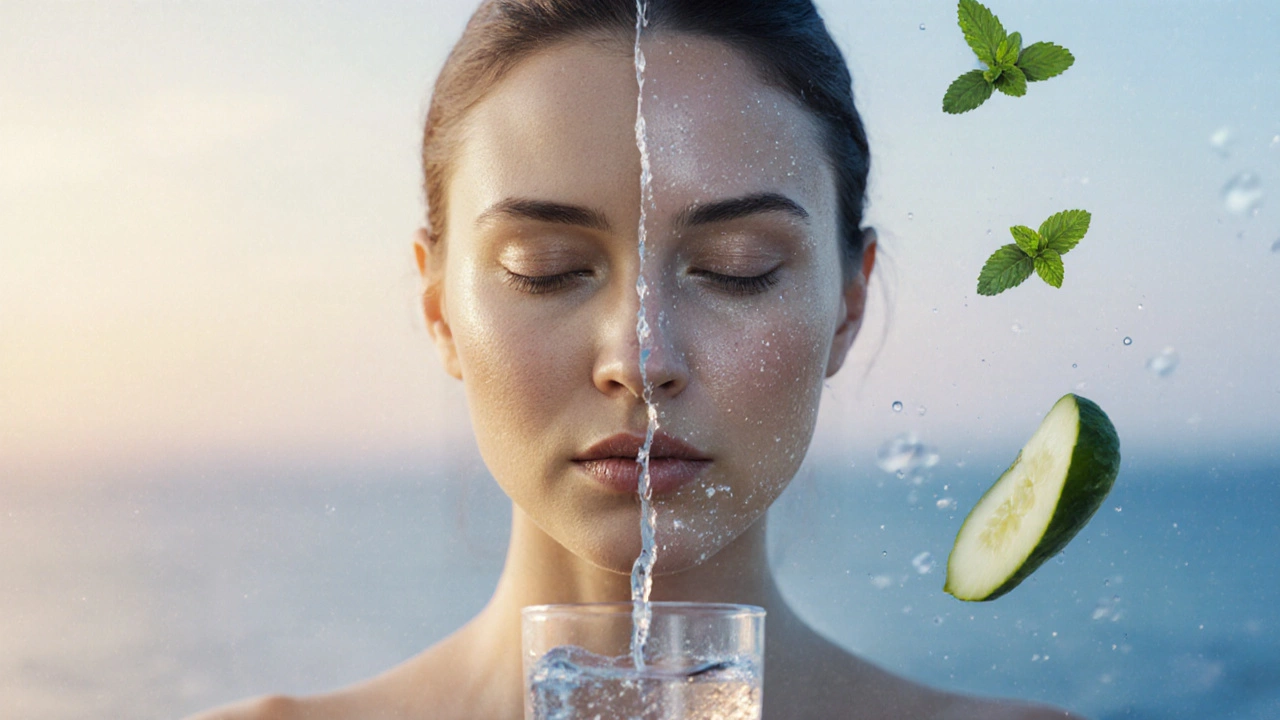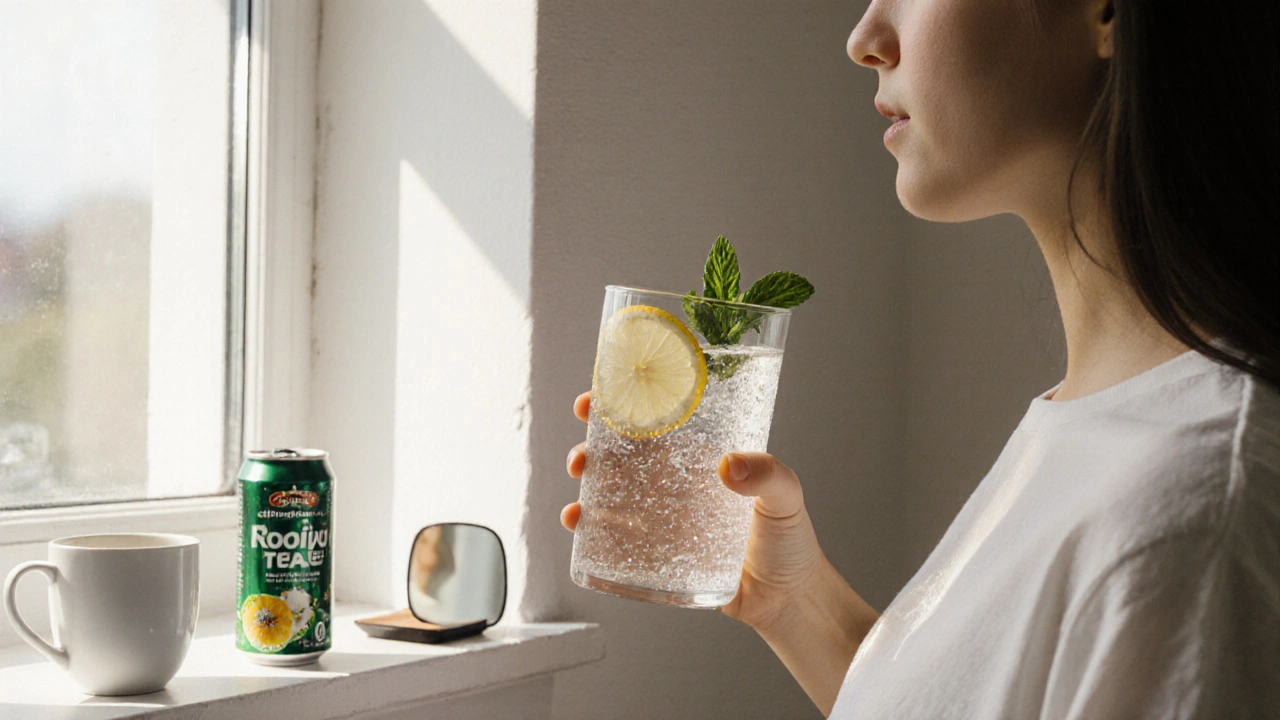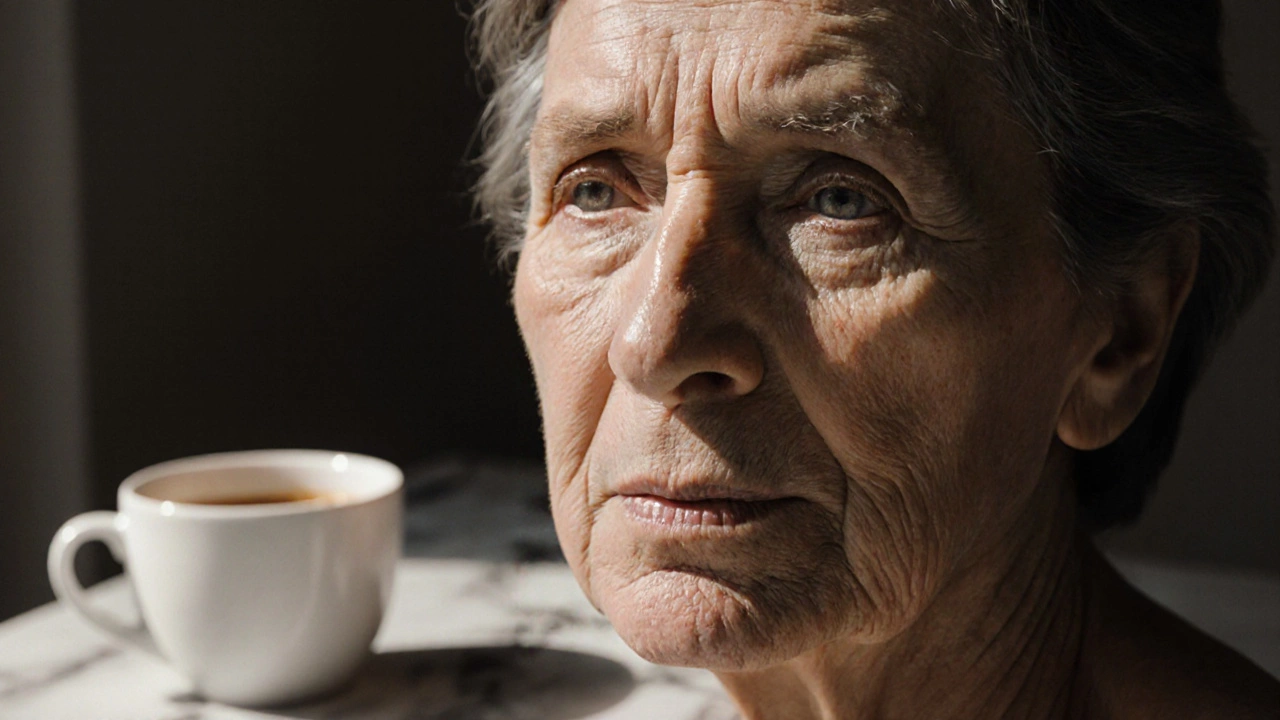Caffeine Skin Impact Calculator
Daily Caffeine Intake
Your Skin Impact Report
Based on your daily intake of 0 cups:
30-Day Improvement Timeline
What to Drink Instead
- Herbal tea (rooibos, chamomile)
- Green tea (20-45mg caffeine)
- Sparkling water with lemon
- Golden milk (turmeric ginger)
- Water with cucumber/mint
When you wake up and reach for your morning coffee, you’re not just chasing energy-you’re chasing a habit that might be quietly aging your skin. It’s a question many people ask: Will I look younger if I quit caffeine? The answer isn’t simple, but the science behind it is clearer than you think.
How caffeine affects your skin
Caffeine is a diuretic. That means it pulls water out of your body, including your skin. When your skin loses moisture, it loses plumpness. That’s why your face might look dull, tired, or more lined after a week of heavy coffee drinking. Dehydrated skin doesn’t bounce back the same way hydrated skin does. Fine lines become more noticeable, and your complexion can take on a grayish tone.
But it’s not just about dryness. Caffeine also triggers your body’s stress response. It raises cortisol, the hormone linked to inflammation and breakdown of collagen-the protein that keeps your skin firm and smooth. Over time, high cortisol levels can lead to sagging skin, puffiness under the eyes, and even breakouts. A 2023 study in the Journal of Clinical Dermatology found that people who consumed more than 400 mg of caffeine daily (about 4 cups of coffee) showed 23% more visible signs of skin aging compared to those who drank less than 100 mg.
What happens when you quit
Within 48 hours of cutting out caffeine, your body starts to reset. Your cortisol levels begin to drop. Your kidneys stop flushing out water as aggressively. Your skin begins to rehydrate from the inside out. You might notice your eyes looking less puffy. Your cheeks might regain a little glow.
By day 7, many people report their skin feels softer and looks brighter. By week 3, the real changes show up: fewer dark circles, less redness, and a noticeable reduction in fine lines around the eyes and mouth. That’s not magic-it’s biology. Your skin is made of 64% water. When you stop draining it, it starts to refill.
One woman in Auckland, 47, stopped her daily triple-shot latte after noticing her skin looked like it had aged 5 years in 18 months. After six weeks without caffeine, she told her dermatologist, “I don’t need filler anymore. My skin just looks… rested.” She didn’t change her skincare routine. She didn’t buy new products. She just quit coffee.
It’s not just about the coffee
Quitting caffeine doesn’t mean just giving up espresso. It means cutting out energy drinks, black tea, dark chocolate, and even some pain relievers that contain hidden caffeine. A single 20g bar of dark chocolate can have 25-30 mg of caffeine. That adds up.
And here’s the catch: if you’re replacing coffee with sugary sodas or fruit juices, you’re trading one problem for another. Sugar breaks down collagen through a process called glycation. That’s why people who drink sweetened iced tea or energy drinks often have the same aged skin as heavy coffee drinkers.
The real win? Switching to water, herbal teas, or sparkling water with lemon. These don’t dehydrate you. They don’t spike cortisol. And they help your skin repair itself naturally.

What caffeine doesn’t do
Some people think quitting caffeine will erase deep wrinkles or reverse sun damage. That’s not true. Caffeine isn’t the main cause of aging. UV exposure, smoking, poor sleep, and genetics play bigger roles. If you’re spending hours in the sun without sunscreen, no amount of coffee quitting will fix that.
But here’s what it can do: make your skin look like it’s been given a second chance. It won’t turn back the clock, but it can slow down the visible signs that make you look older than you are.
Who benefits the most
You’re more likely to see a difference if you:
- Drink 2 or more cups of coffee a day
- Have dry or sensitive skin
- Struggle with dark circles or puffiness
- Feel anxious or jittery after caffeine
- Don’t drink enough water
If you sip one small coffee in the morning and drink plenty of water, you probably won’t see dramatic changes. But if you’re downing three lattes and a soda by noon, your skin is likely paying the price.
How to quit without crashing
Going cold turkey can give you headaches, fatigue, and irritability for a few days. That’s normal. But you don’t have to suffer.
Try this: Cut your intake in half for the first week. Swap one coffee for green tea (which has less caffeine and more antioxidants). Then, in week two, switch to decaf or herbal tea in the morning. By week three, you’re probably not even thinking about coffee.
Drink at least 2 liters of water a day. Add a pinch of sea salt to your water-it helps your body hold onto the hydration you’re giving it. Eat more water-rich foods: cucumber, watermelon, celery, oranges. Your skin will thank you.

The bigger picture
Quitting caffeine isn’t a magic anti-aging treatment. But it’s one of the easiest, cheapest, and most effective lifestyle tweaks you can make to look fresher, brighter, and more rested. It’s not about looking 25 again. It’s about looking like yourself-without the tired, drained version.
Think of it this way: your skin is a mirror. It reflects your sleep, your stress, your diet, and your hydration. Caffeine is just one thing pulling the strings. Take it out, and the reflection gets clearer.
What to expect in the first month
Here’s a realistic timeline if you quit caffeine:
- Days 1-3: Headaches, low energy, cravings. This is withdrawal. Push through.
- Days 4-7: Better sleep. Less midday crash. Skin feels less tight.
- Week 2: Dark circles fade. Puffiness reduces. Makeup applies smoother.
- Week 3-4: Skin looks more even. Fine lines appear softer. You catch yourself smiling more in the mirror.
You don’t need a laser treatment or a pricey serum. You just need to stop draining your body of what it needs to look healthy.
What to drink instead
Here are 5 better alternatives:
- Herbal tea: Rooibos, chamomile, or peppermint-no caffeine, calming, rich in antioxidants.
- Green tea: Has a small amount of caffeine (20-45 mg) but also L-theanine, which calms your nervous system.
- Sparkling water with lemon: Refreshing, hydrating, and adds a little flavor without sugar.
- Golden milk: Turmeric, ginger, and warm plant milk. Anti-inflammatory and soothing.
- Water with cucumber or mint: Simple, cheap, and the best thing for your skin.
You don’t need to replace coffee with another stimulant. You need to replace it with something that helps your body recover.
